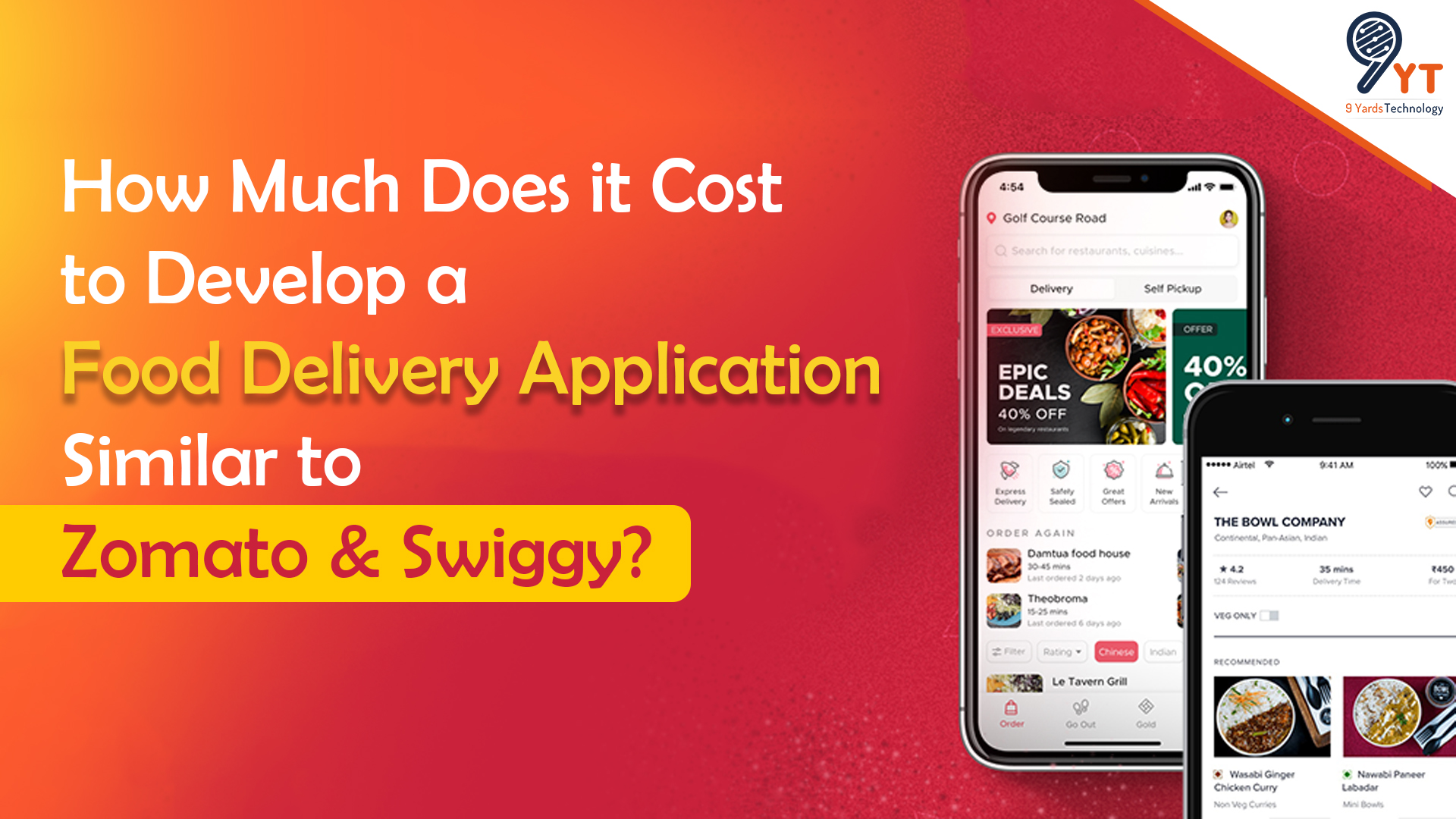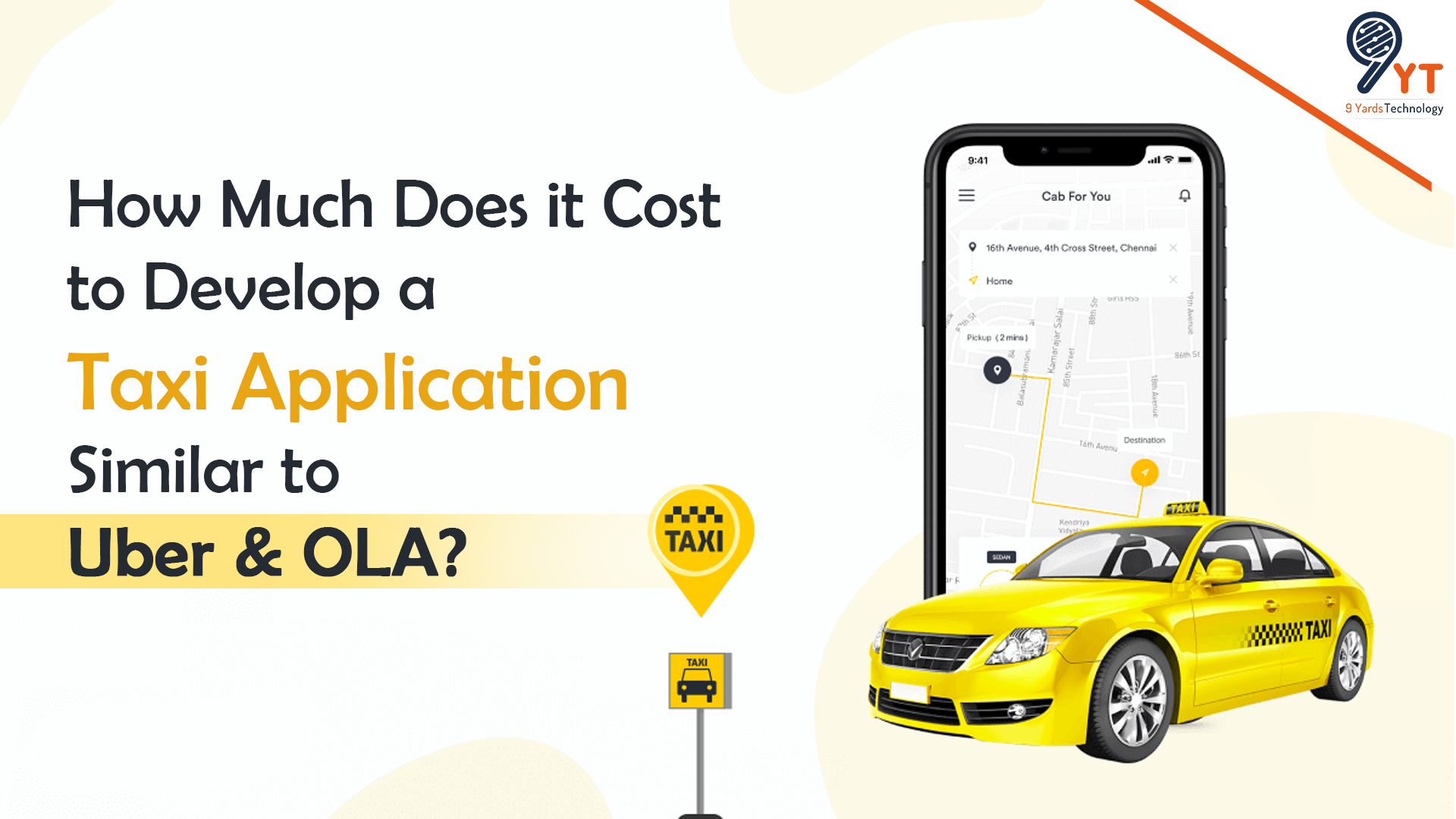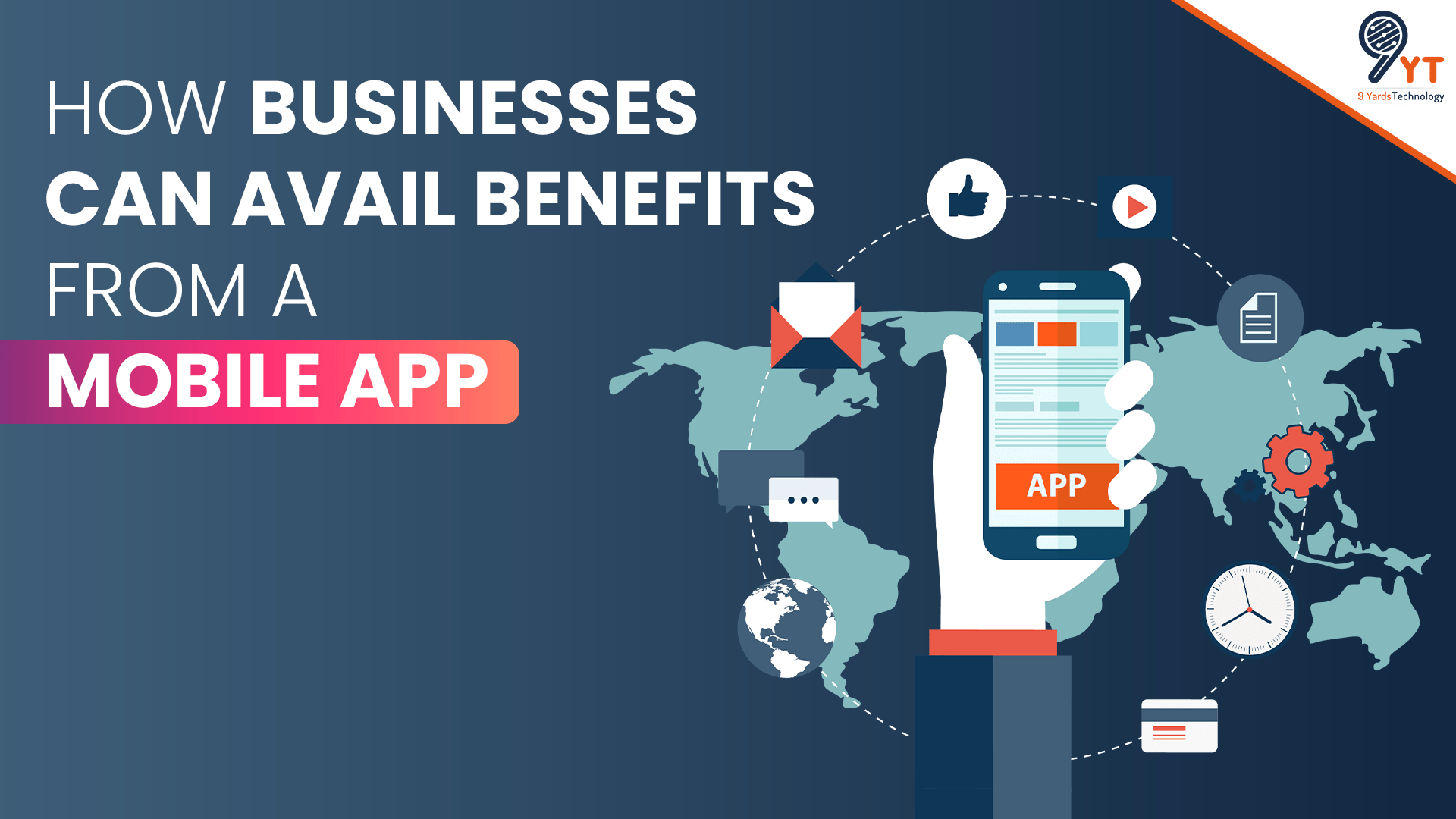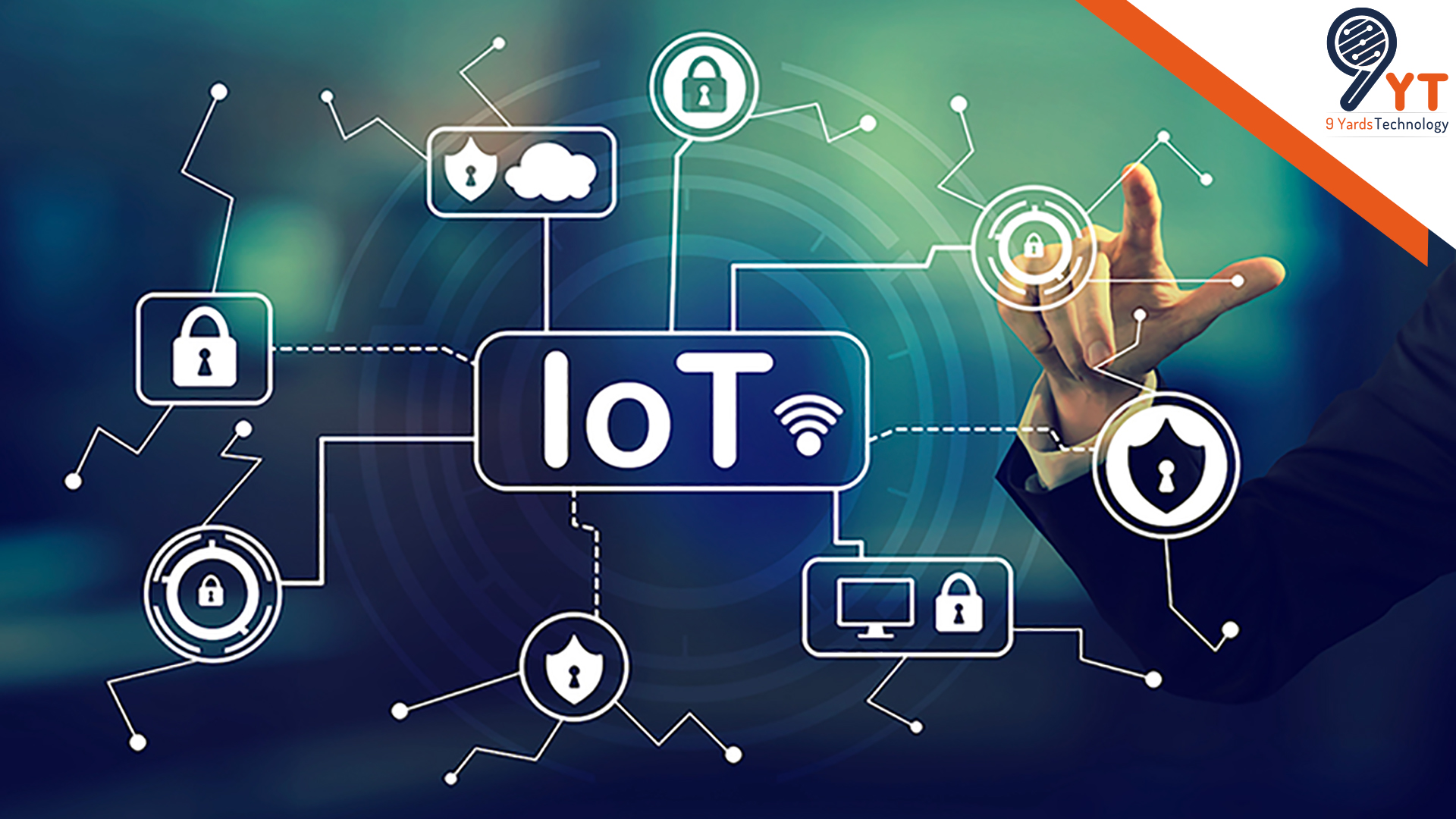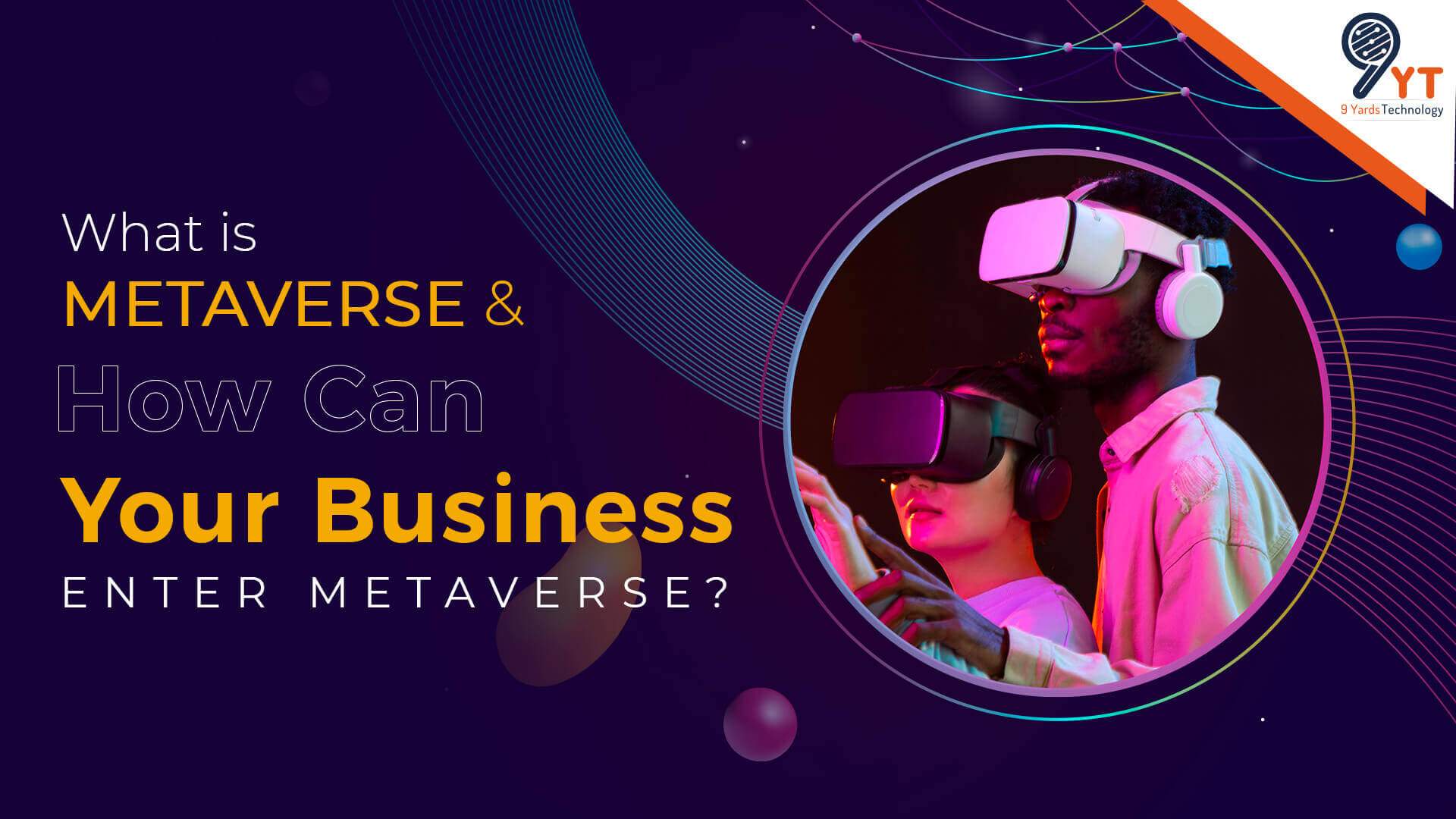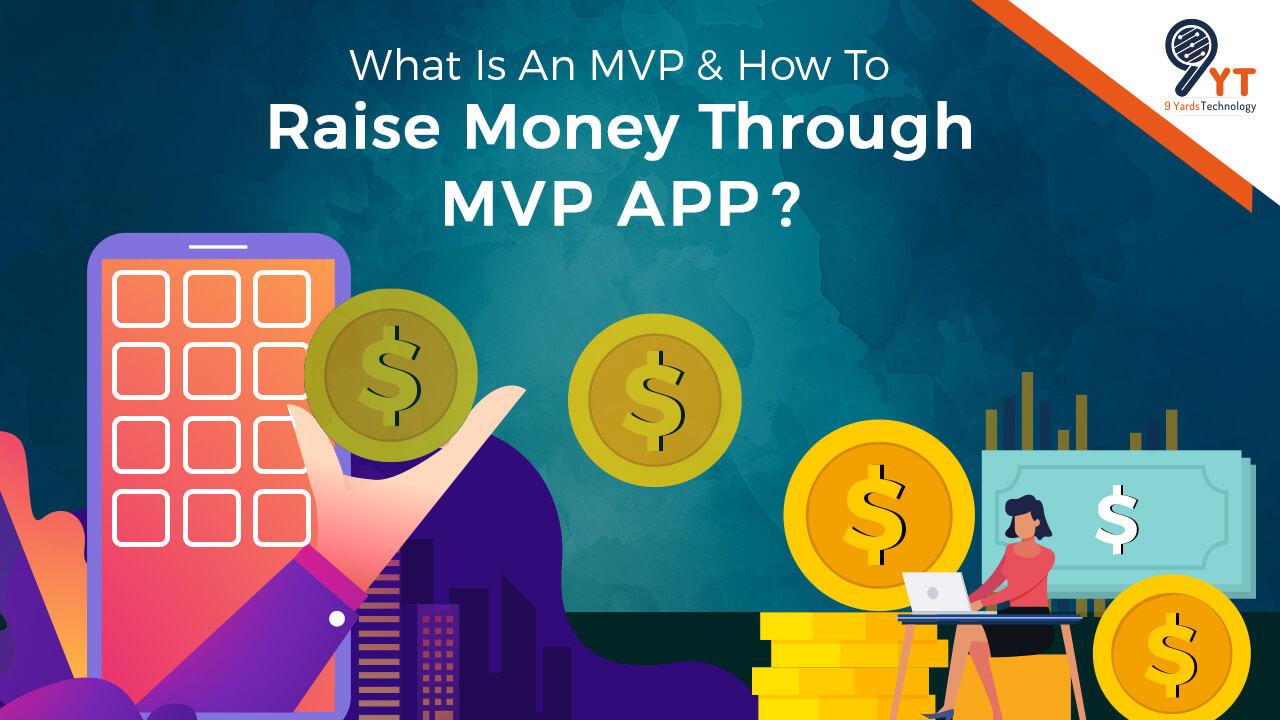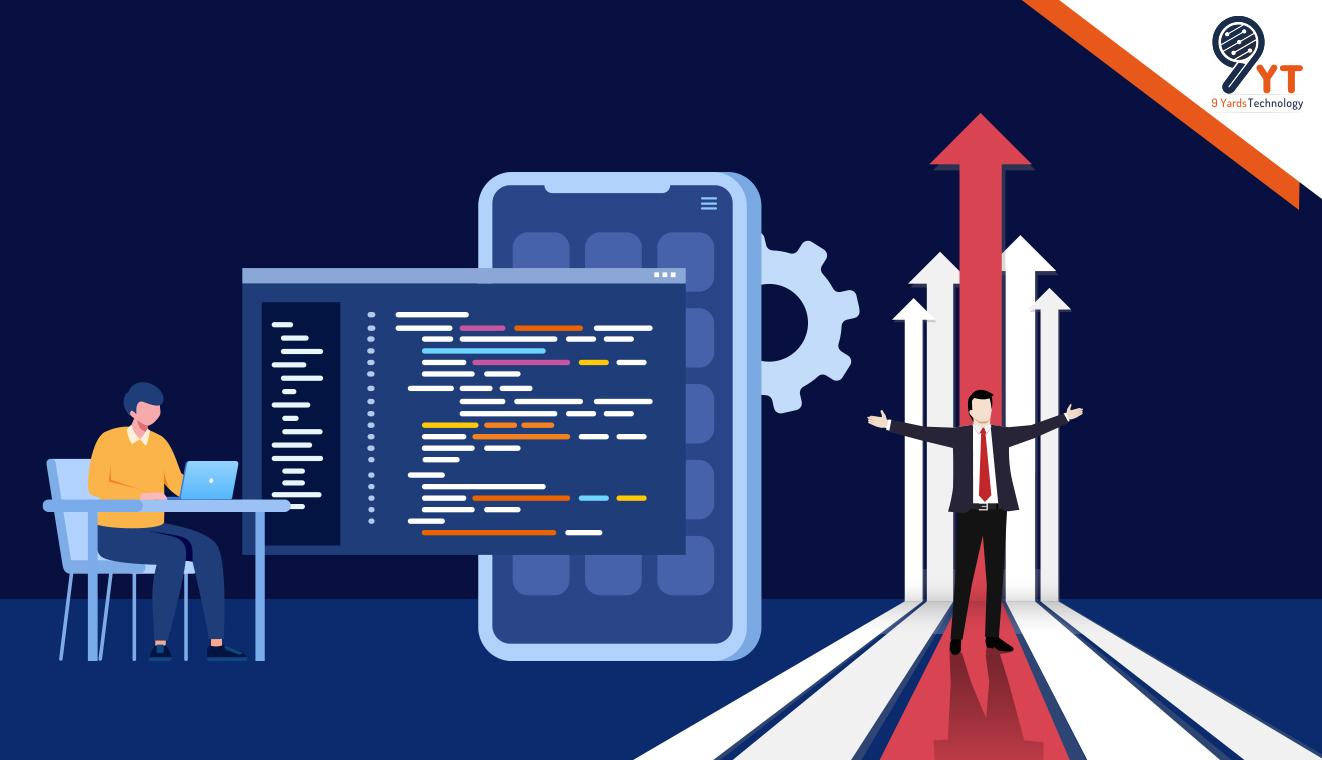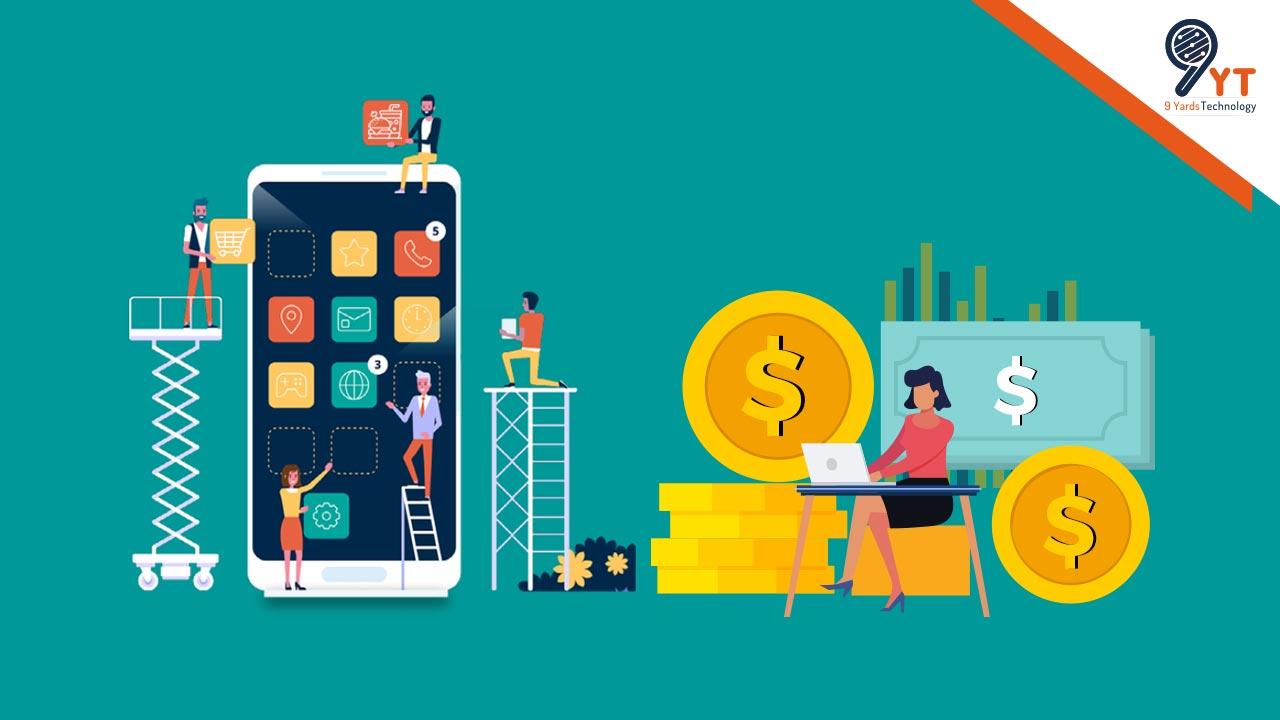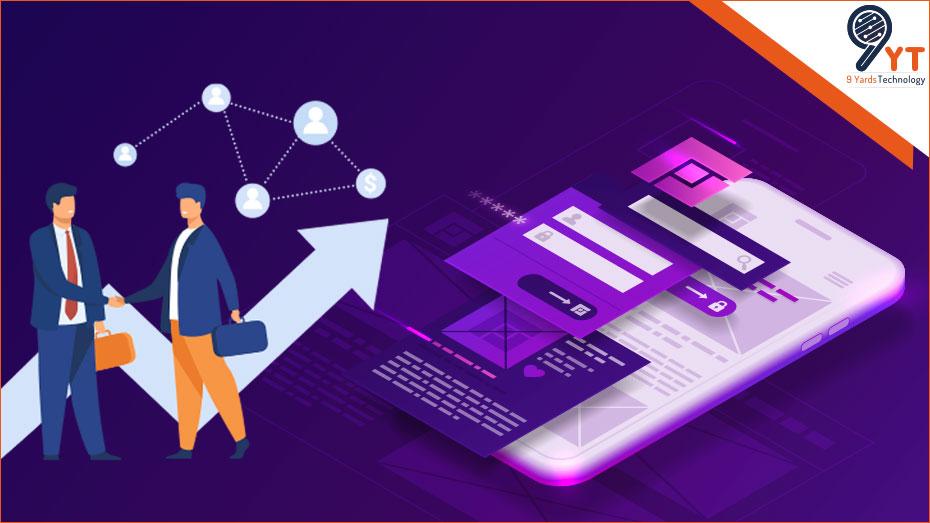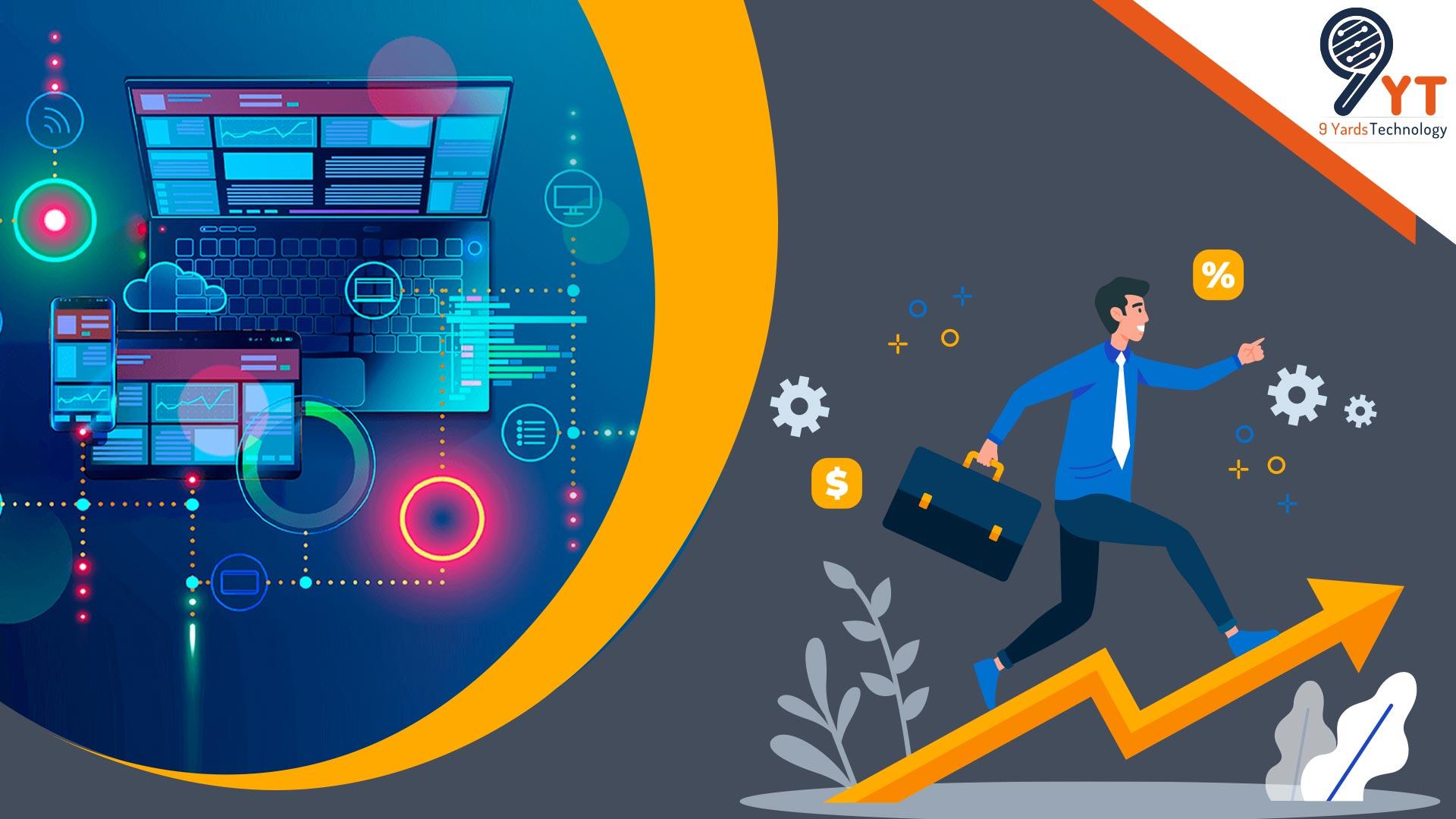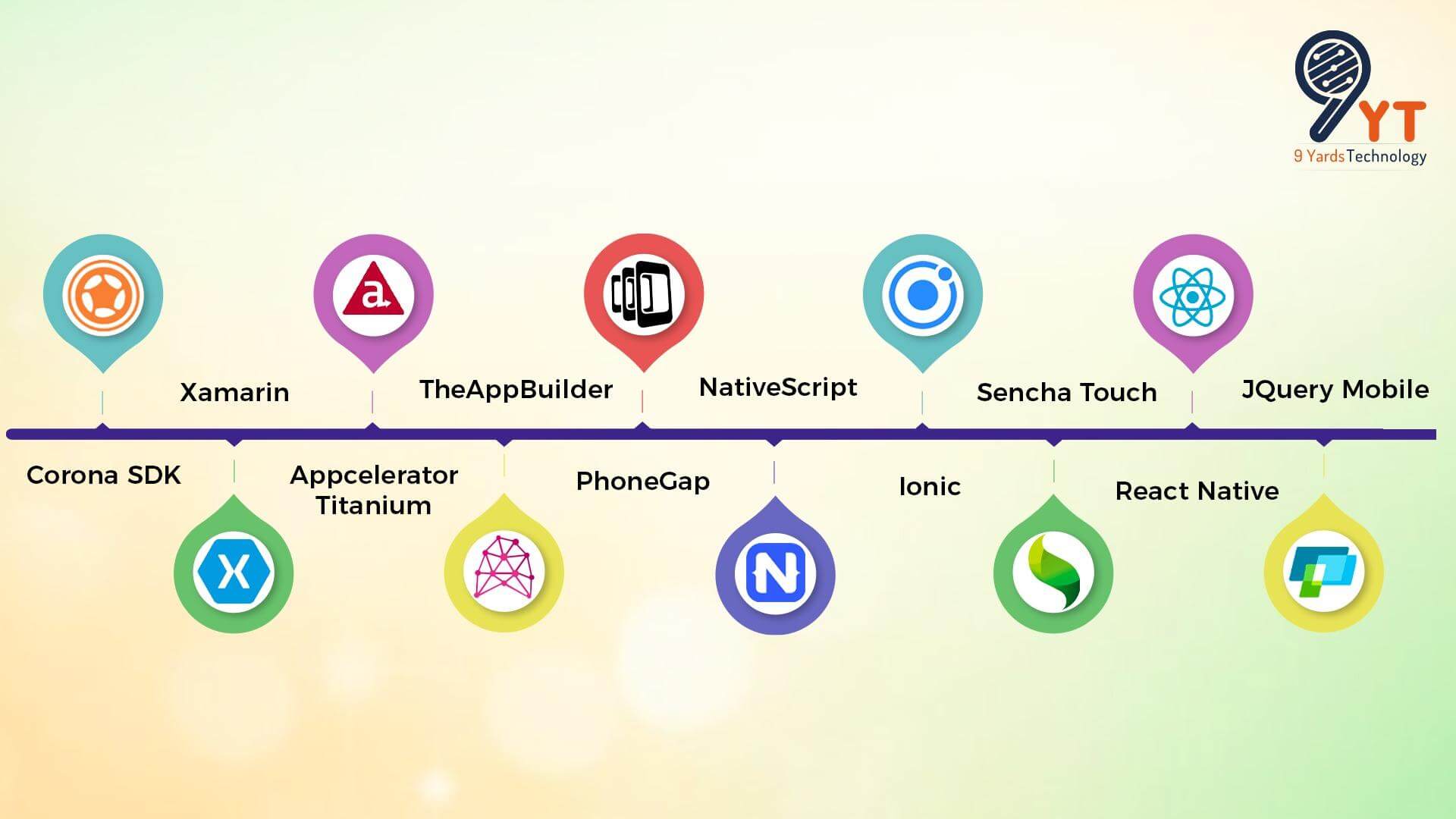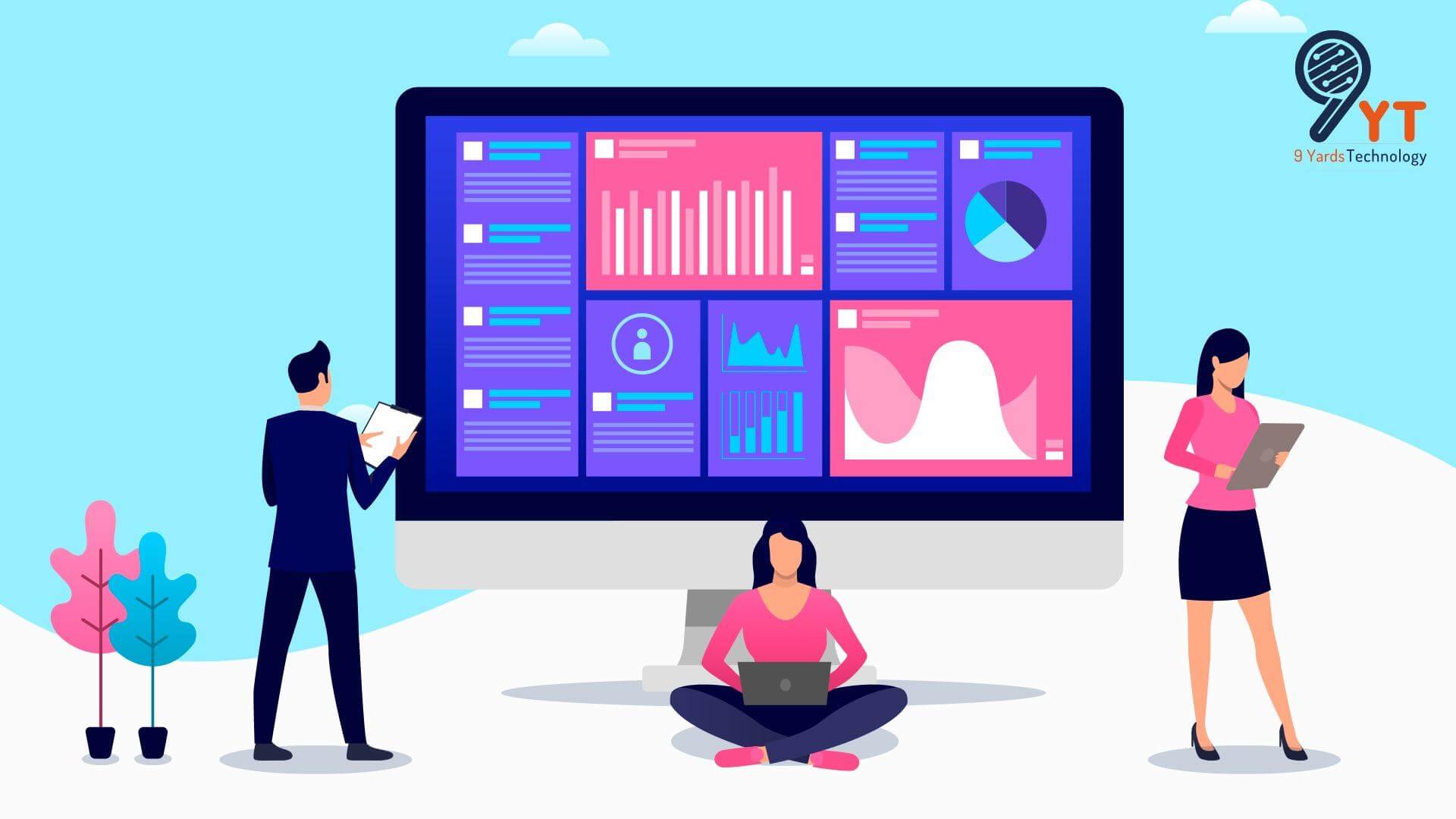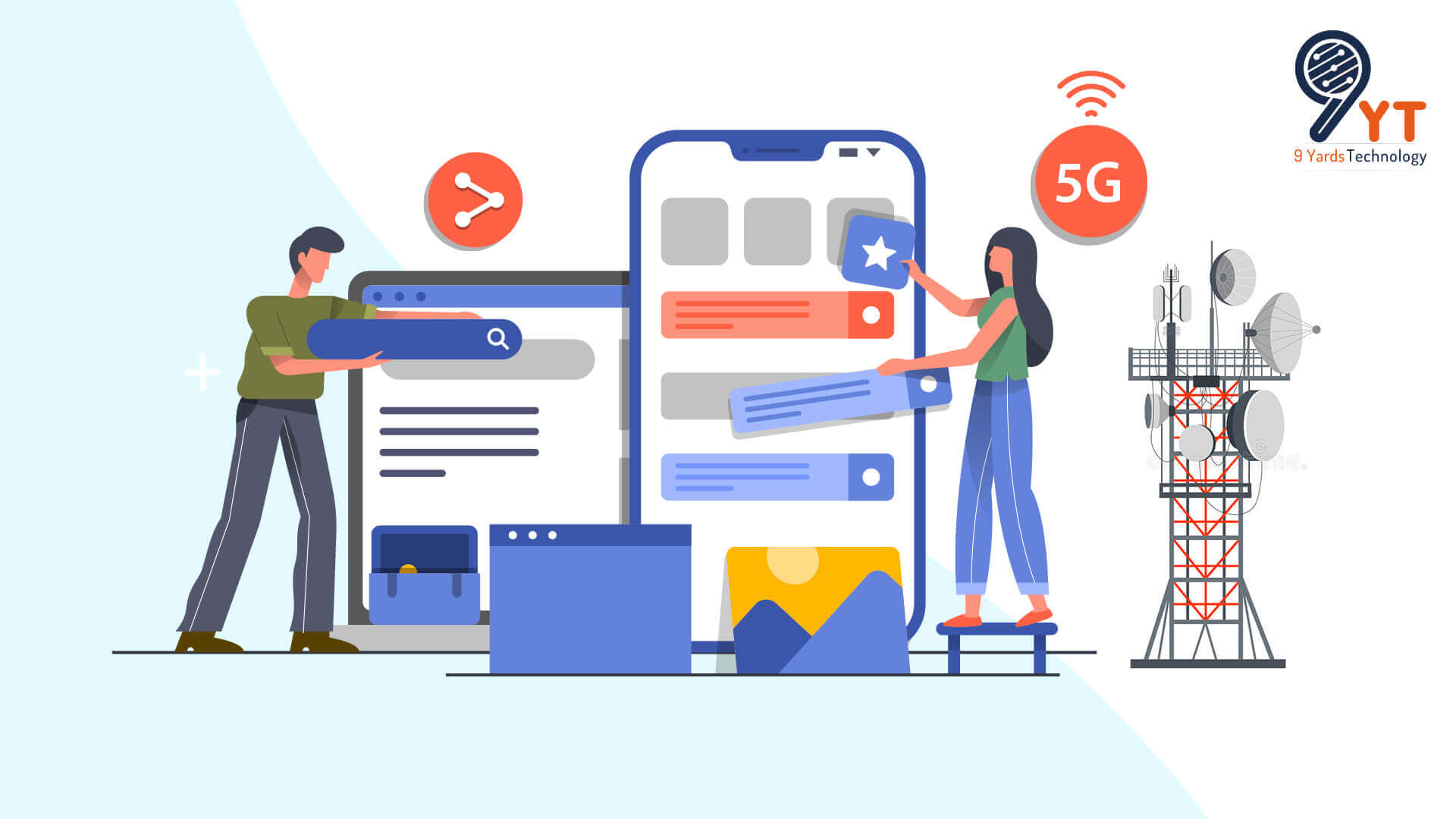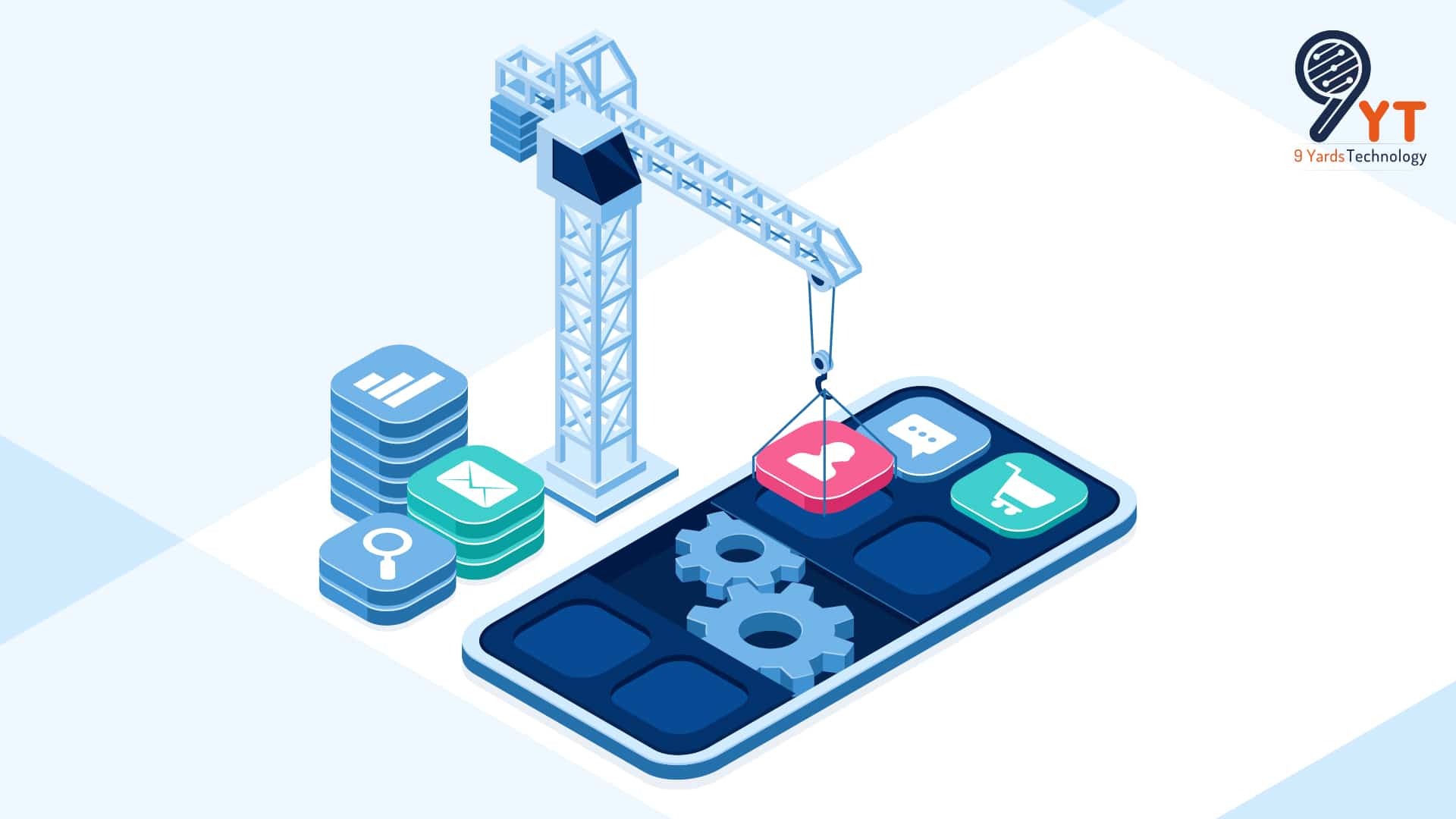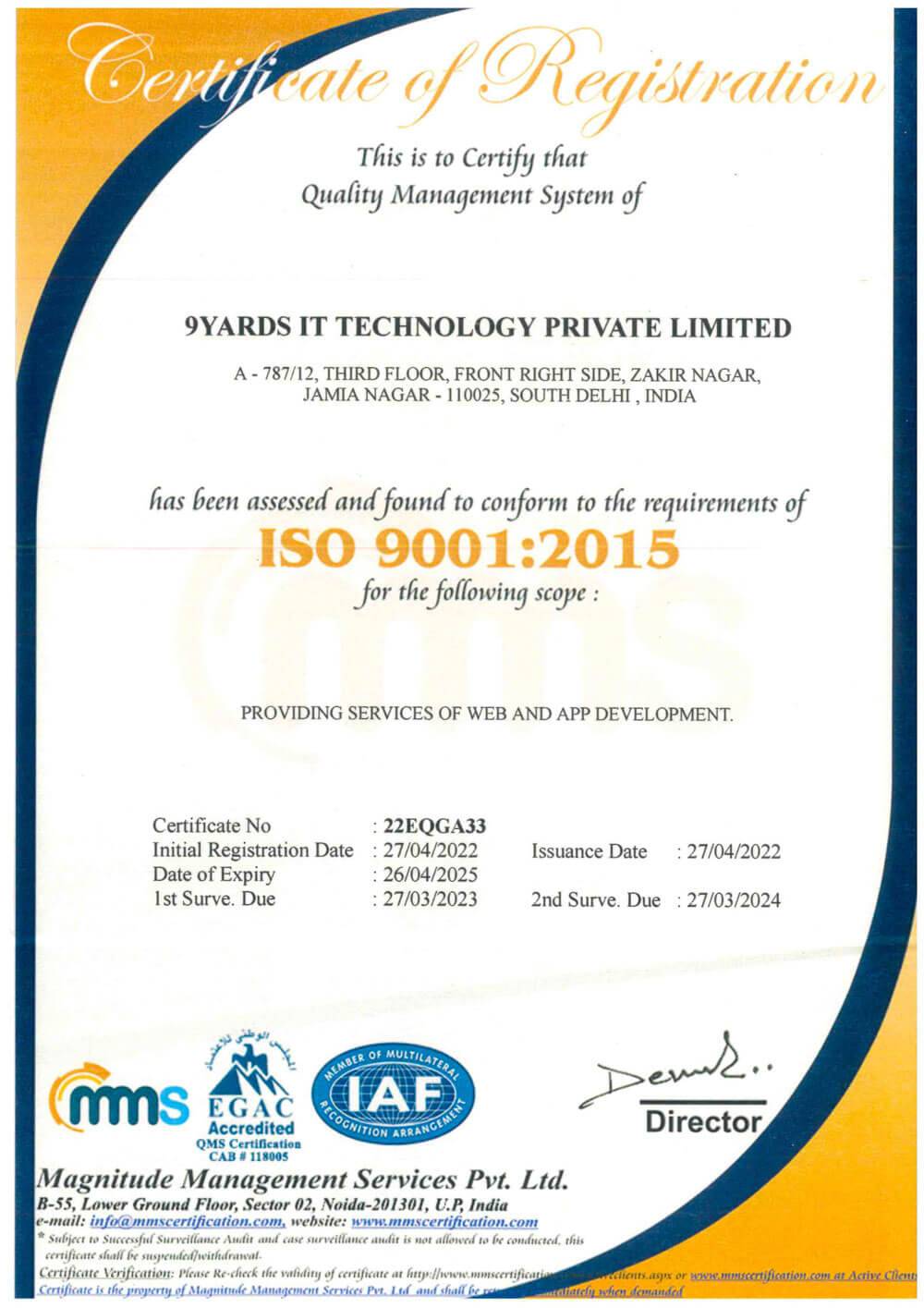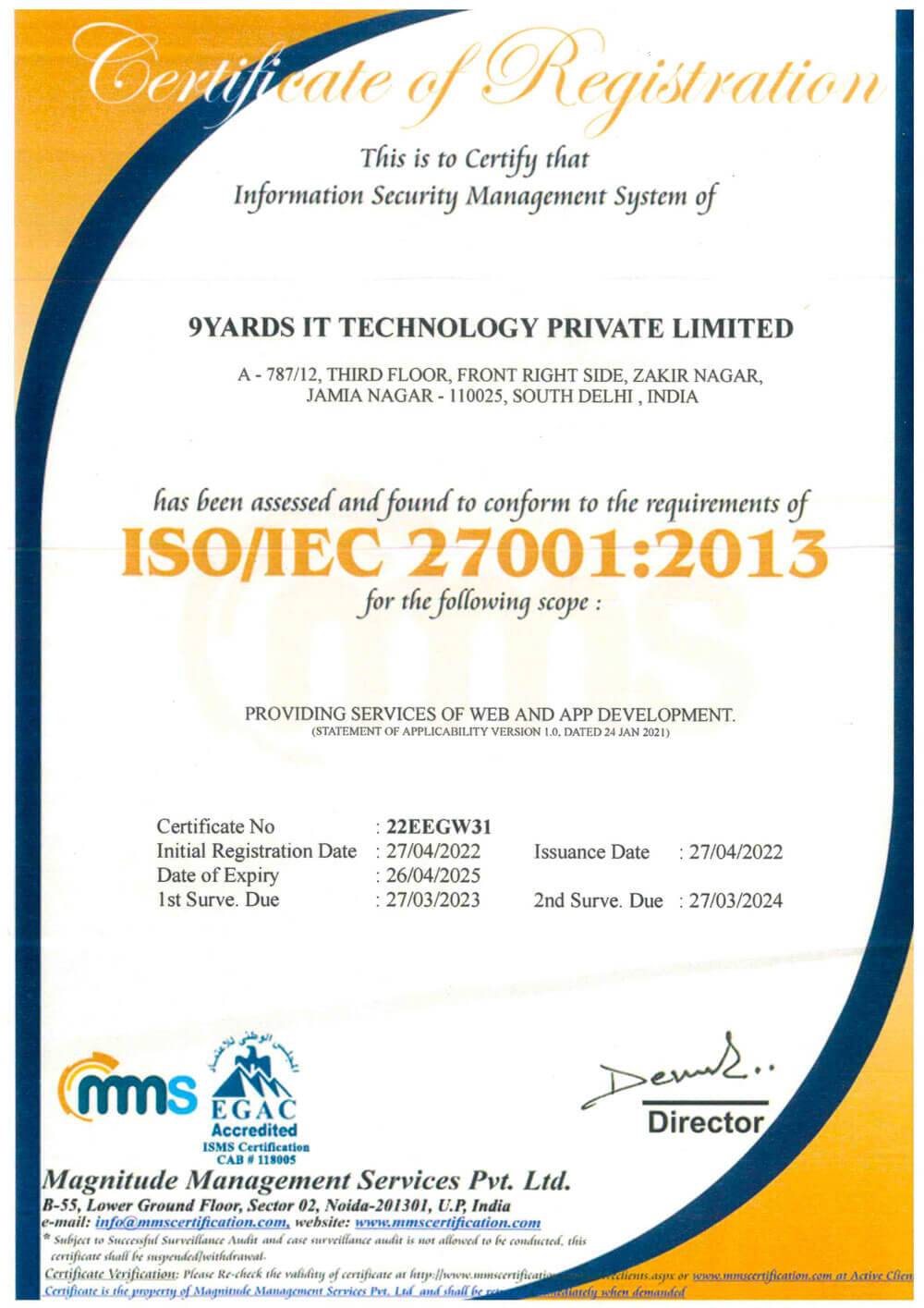If you have an app idea, consider developing a mobile application for your product that offers cross-platform functionality. It doesn’t matter how unique your product is; if it doesn’t penetrate deep into your everyday customer’s life through smartwatches, smart glasses (google glass), fitness trackers, etc. There are high prospects that your customers might go to your competitors rather than wait. This highly calls for the need for wearable technology app development.
This write-up provides a complete analysis of the ever-evolving consumer demand and trends, thus providing you with a comprehensive insight into the wearable app development process.
So let’s dive into the current market scenario wrt wearable app development.
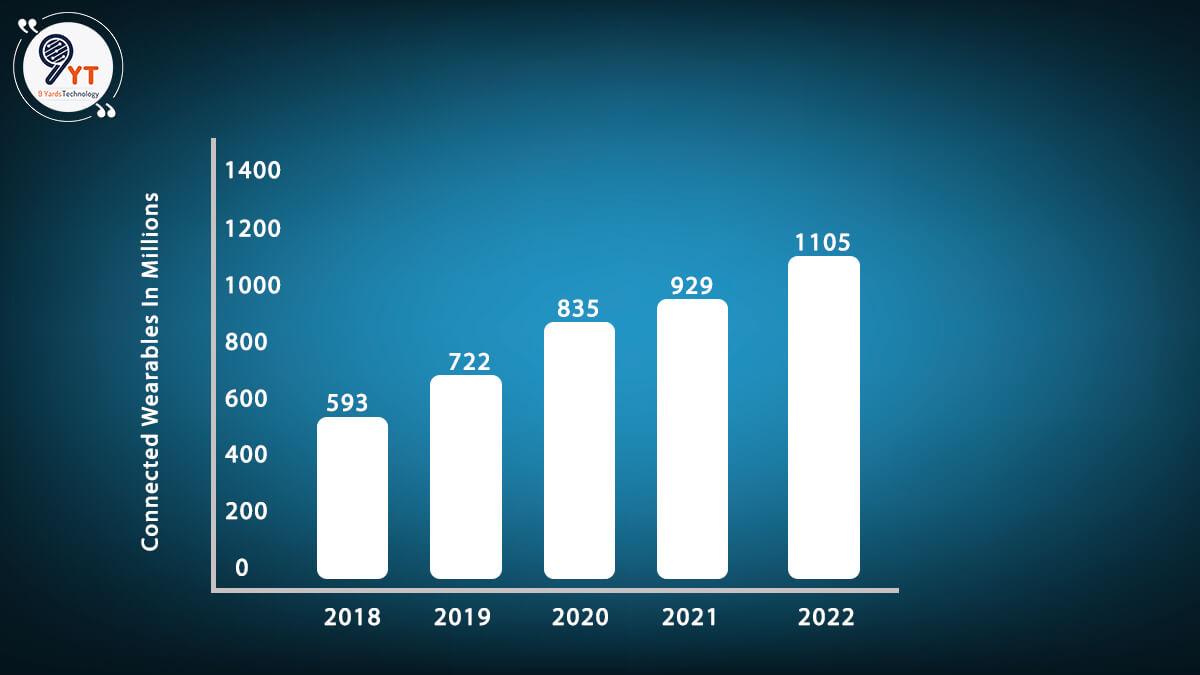
Current Market Overview
- Statista cites that in the span of 6 years, 2016- 2021 number of wearable devices almost tripled, increasing from 325 million to 929 million in 2021.
- Recent surveys state that the wearable technology market size is anticipated to be valued at approx. 256 billion by 2026, growing at a CAGR of 18% from 2021-2026.
- By the end of 2022, wearable app development is projected to cross shipments of over 344 million, and 650 million by 2027.
- There are already 1 billion connected wearable devices worldwide.
- It is also predicted that in terms of connectivity, 4G smartwatches will be significant devices at 5% in 2022, while 5G will appear in 2023 with low penetration of 0.3%.
From the above stats, it’s evident that the wearable market is growing at a fast pace.
Now, Let’s check the difference between standard and wearable app development.
How is Wearable App Development different from Standard App Development?
A wearable application is specifically designed for wearable devices like fitness trackers, smartwatches, smart glasses, and many more for tracking real-time information in sync with WiFi or Bluetooth.
In addition to that, wearable devices are designed in a totally different way compared to regular apps with a customized hardware set and application size.
Check the brief comparison mentioned below to know the difference between mobile and wearable apps.
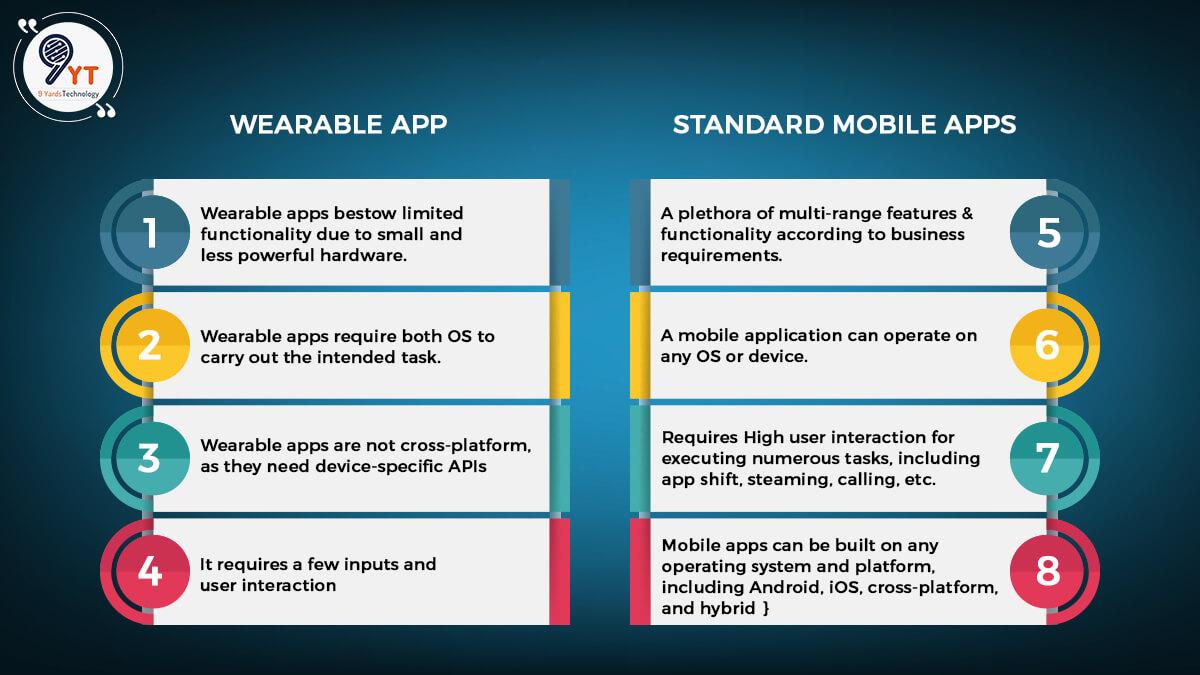
Types of On-Demand Wearable App Development
Wearable app development is highly functional IoT technology as it is highly engaging and user-centric for businesses that work to personalize their customer experiences. Numerous popular wearable app development trends are reshaping technology in various ways and sophistication daily.
While discussing trends, here are some of the most popular trends in wearable technology.
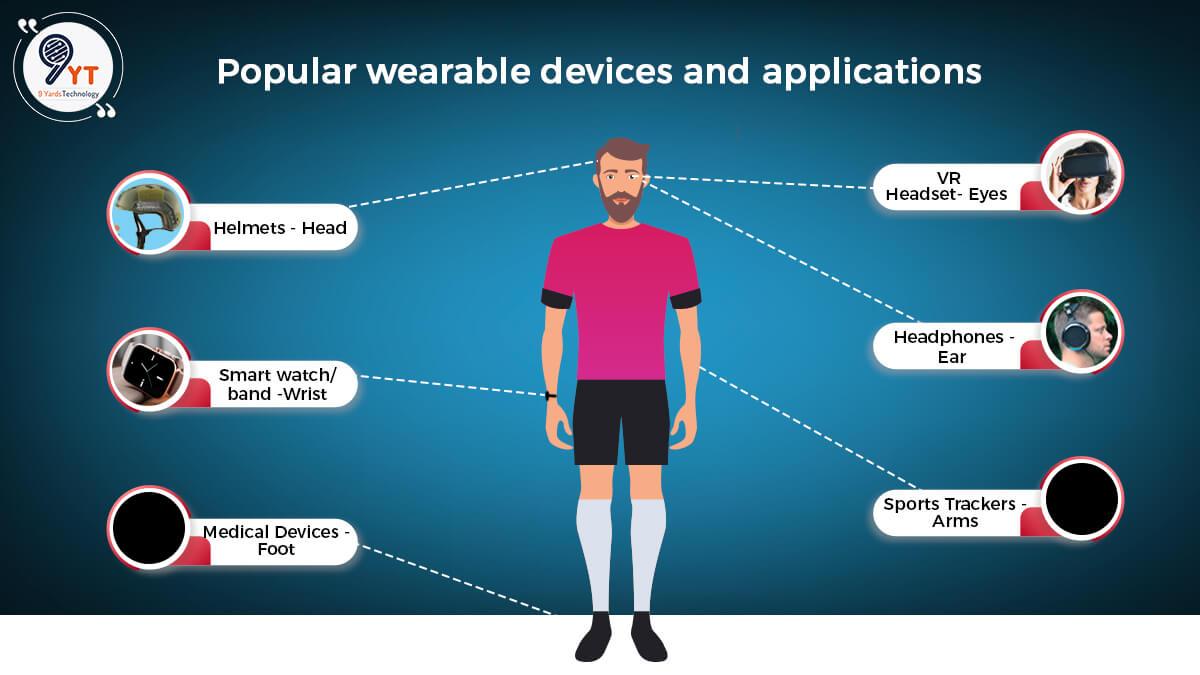
- Smart Watches
A smartwatch is undoubtedly one of the most popular wearables, with an expected market of 253 million by 2025. It gained massive popularity among users and are widely used wearables globally. It offers numerous features to users, including a pedometer, notifications, activity trackers, etc.
Smartwatches incorporate senor-related smart features to enhance the user experience and offer benefits like heart rate monitoring, SpO2, and activity monitoring.
- Smart Eyewear
Eyewear and smart watches are upcoming technological advancements that will offer users amazing features with visualization. It is a technological advancement that integrates data associated with the object that a user visualizes
It collects information from the internal and external features of the users, along with supporting technologies like GPS, Bluetooth, and WiFi.
- Fitness Bands
Fitness bands or smart bands are usually worn to track fitness and everyday movements and activities. These devices collect information through user activity and display it in terms of sleep, daily routines, steps, etc.
Wearable app devices help users help to set goals, monitor health, connect with friends, and modify the device interface. Some benefits that smart bands offers are Health metrics, Breathing rate, Oxygen saturation monitoring, etc.
- Head Mounted Displays
AR and VR glasses are the most specific examples of head-mounted displays based on wearable app development solutions. It can track user activity and offers them information about the virtual ecosystem.
Most promising industries to develop Wearable App Development
Wearable apps and devices have been incorporated into different types of industrial application scenarios shaping app development.
Have a glimpse of numerous sectors that are happily utilizing the benefits of wearable app development.
- Healthcare
Wearables in the healthcare industry have opened a new way of preventive healthcare that allows your patients to take preventative measures in their comfort zones by keeping track of their health details. Healthcare sectors incorporate wearable technology in the form of glucose monitors, smart bands, diagnostic chips, etc.
- Gaming
AI-enhancing wearables and gaming devices have garnered more engagement with the launch of VR devices a higher number of people showing interest in AI-backed gaming. Therefore, wearable devices are often in a symbolic linear rate with the common goal of offering a target audience an uninterrupted AI experience.
- Education
With the help of AR/VR and wearable, there is a considerable advancement in the education sector when it comes to virtual learning. Google glass wearables help with the detailed anatomy of the object with data and other important information. Wearables are also helpful for studying subjects that explore dimensions, including small molecules, for research purposes.
- Fitness & Sports
With voice assistants and real-time insights body mounted AI wearable can offer complete fitness analysis to the users with real-time insights and voice assistance. The AI-enabled Bluetooth devices in the form of fitness trackers are now featured as biosensors. The biosensors detect elevation, proximity, heart rate, motion, and touch, e.g., GoogleFit, Nike+, etc.
- Retail & Fintech
The retail and fintech industry highly utilizes wearables. The wearable supporting devices applications are synced with AI-driven wearable apparel like gloves and jackets. Wearable apps are also highly utilized by the fintech and insurance sector since smartwatches nowadays support NFC sensors that enable contactless payments. For example, Paytm, Phonepe, apple pay, and Googe Pay are some of the most popular payment apps based on wearable technology.
How to get started while planning your wearable app?
If you are a business that finds wearable applications fascinating and you are planning to build one. It might be a lengthy process that you may find frustrating; here is the checklist to find several coding and circuit design; there are numerous other factors you need to consider before starting the development process of wearable apps.
- Brainstorming
Brainstorming is the task required you to conduct to get a clear idea of the type of application you want to build your business. Before starting any project, a brainstorming session is a must to analyze and know about the requirements. Thus starting by making a rough idea of your app, including the features and how it looks.
- Collecting Data
Wearable apps and devices make use of users’ data. With the help of users’ data, they get user behaviors insight which helps them improve the application’s functionality. Precise data helps to get a clear understanding of the context of the collected data that doesn’t leave space for twisted or inaccurate results.
Hence to have a precise list of the required, you must focus on developing app sensors for Android wear applications, smartwatches, and other devices.
- Project Planning Checklist
To create a project planning checklist, you must draft a proper checklist of questions while mentioning the project’s specifications. In addition, you must add questions to make your project durable, whether you require to make your circuit transparent or not about your users, functionalities, etc.
When you have questions, it becomes easy for you to know about the project, its developing process, and the platform.
Factors to consider while developing wearable devices and applications
After you have completed the prototyping process of your idea and features, it’s essential to refine the sketch of your idea to make it more understandable and easy to follow; through this process, you’ll be able to find any glitches in your application’s design.
This allows you to make important changes before beginning the app development process. Thus, it ensures all the features and roadmap are finalized before head starting the development process.
- User Base
Identifying the user base is an important aspect to consider as different accordingly. It is essential to comprehend and know about the development status of the application, what kind of application is being built according to the demographic, who the users are, and what are the required changes.
- Apps Complexity
Apps features and complexity determines whether your application meets the specific requirements or not. But wearable app development is devised to deal with a direct connection rather than tons of computational procedures.
- Security
Data security becomes one of the crucial aspects when it comes to wearable applications as it stores critical information, i.e., user’s data like GPS, habits, heart rate, and many more thus, it makes the information sensitive. Hence data security becomes exceptionally critical for wearable apps.
- Integration
The emergence of wearable apps has impacted consumers, brands, and app developers. Businesses are empowering their governance with intuitive wearable app development that integrates seamlessly with a broad range of connected devices and sensors.
Integrating wearable apps with multiple systems enables us to use various applications with a single touch. For integration to be successful, your wearable app developer must first determine which data is required for the execution of a wearable application and then use SoC (system-on-a-chip) to interface with a number of sensors and actuators natively.
- Prototyping
Before investing time in development, it is essential to comprehend and know your ideas, as well as the intent behind a design or feature.
The way the app engages users and presents data is absolutely critical. It should be simple and easy to understand. Too much information causes confusion and a poor user experience. Prototyping is thus the best option before proceeding with development and launch.
However, when it comes to design, these devices present a unique set of challenges. There are several limitations, including lower information density, a smaller screen size, and shorter battery life. As a result, they necessitate a distinct design approach.
How to design wearable applications?
There are a plethora of options available in the market ( inculcating watches, smart bands, glasses, wrist bands, rings ) and many more. We have curated a detailed insight for wearable app development. Your application’s design must seamlessly fit with all magnitudes of wearable devices.
- Coherent
Wearable applications are designed in a way that they are coherent. This means the app is restricted to showing a certain amount of data and limited interactions.
- Context
The context can be termed as the backbone of any design and requires to be used for providing specific information in minimum time duration. You’ll automatically design for context while designing a wearable app, as these devices are fitted with sensors.
- User Interface
While designing a wearable device, it is vital to integrate the wearable device with existing users’ devices. Hence, wearable app development should be done keeping user interfaces and other devices in mind.
For example, a smartwatch’s heart rate monitor and blood pressure can be used to gather information, but you need a smartphone to view that data.
Cost of Developing a Wearable Application
The cost of developing a wearable application depends on numerous factors, features, and platforms. Usually, the development cost varies depending on your project requirements.
As we are simply not talking about a specific application, thus the price may range differently. Here we are just giving you a rough estimate of the app. The cost depends on requiring various features and functionalities in the budget list. The wearable app features, tech stack, the complexity level of your wearable app, and the application development company define your app’s overall cost. A wearable application may range from $35000 – $500000 or above.
How 9Yards Technology equips you with a flawless wearable mobile app?
With the advancements in technology, 9Yards Technology is a trusted name in the wearable app development domain. We are adept at incorporating those advancements and ultra-modern methodologies into crafting a flawless application.
With an army of in-house proficient techies, we can craft a glitch-free application that sets you apart from your competitors.
What sets us apart-
- Impeccable Wearable app development
- Seamless deployment
- Latest tech stack
- Multi-Platform Integration
Get in touch with our experts to get started!

9Yards Technology has carved a niche for itself worldwide by arming incubators and Fortune 500 companies with disruptive IT solutions. We’re a force to reckon with for tailored web/mobile app development and rigorous software testing. Our presence knowns no bounds with a diverse clientele in the US, UK, India, etc. We’ve 100+ dedicated techies who have successfully delivered to 250+ clients without a hitch.
